Disclosure: This article contains affiliate links. We may earn a commission from purchases at no extra cost to you, which helps our travel content.
Standing in the heart of America's plains, Wichita surprised me with its vibrant tapestry of shopping experiences that speak to both history and innovation. As someone who spends most of my time analyzing climate patterns across vulnerable regions, this Midwestern city offered me a refreshing opportunity to explore how local commerce reflects cultural resilience and community adaptation. He aha te mea nui o te ao? He tangata, he tangata, he tangata — What is the most important thing in the world? It is people, it is people, it is people. This Māori proverb resonated deeply as I discovered the stories behind Wichita's most treasured shops and markets.
The Historic Delano District: Where Past Meets Present
Delano District stands as a testament to regeneration and community spirit, much like the indigenous communities I've worked with across Southeast Asia. Once a rowdy cowtown destination where cattle drivers celebrated the end of their journey, today it houses some of Wichita's most characterful shopping experiences.
My first discovery was Bungalow 26, a vintage haven where carefully curated mid-century furniture pieces sit alongside handcrafted jewelry made by local artisans. The owner, Martha, explained how she sources items with stories, prioritizing pieces that have stood the test of time—a philosophy that aligns beautifully with traditional Māori concepts of kaitiakitanga (guardianship of resources).
Nearby, Hatman Jack's offers an experience that transported me back to an era when hats weren't just accessories but statements of identity. Using a vintage hat steamer, Jack personally shapes each hat to perfectly fit his customers' heads. The precision reminded me of watching master weavers in Bali create ceremonial headpieces, with the same attention to individual fit and cultural significance.

💡 Pro Tips
- Visit on First Friday evenings when many shops stay open late and offer refreshments
- Ask shop owners about the history of their buildings - many have fascinating stories dating back to Wichita's cattle trade era
- Bring cash for smaller vendors who may not accept cards
Revolutionizing Retail: The Workroom and Wichita's Maker Movement
The sustainable fashion movement has always fascinated me as it parallels climate adaptation strategies—both require reimagining existing resources. At The Workroom on East Douglas Avenue, this philosophy comes alive through owner Janelle's commitment to featuring over 100 local makers under one roof.
During my visit, I found myself drawn to a display of upcycled leather earrings made from furniture factory offcuts. The maker explained how she sources material that would otherwise end up in landfill—a perfect example of the circular economy principles I advocate for in my climate work.
The shop also hosts regular workshops where visitors can learn traditional crafts with modern sustainable twists. I participated in a natural dyeing session using native Kansas plants, reminiscent of the traditional Māori dyeing techniques my grandmother once taught me. For those wanting to try natural dyeing at home, I recommend picking up a natural dye starter kit that includes everything needed to experiment with plant-based colors.
Nearby, Bespoke Leather offers handcrafted goods using techniques passed down through generations. The owner, Miguel, uses a leather working toolkit to create pieces that will last decades—the antithesis of our disposable culture.

💡 Pro Tips
- Check The Workroom's workshop schedule online before visiting to time your trip with interesting classes
- Many makers take custom orders if you have specific ideas or needs
- Ask about the sourcing of materials to discover fascinating supply chain stories
Harvester Arts District: Where Heritage Meets Innovation
The transformation of Wichita's old grain elevators and industrial spaces into the vibrant Harvester Arts District mirrors similar adaptive reuse projects I've documented in post-industrial cities across Eastern Europe. This district exemplifies how communities can honor their heritage while creating new economic opportunities—a principle that resonates with indigenous approaches to development.
At Fibonacci Home, I discovered furniture made from reclaimed barn wood sourced from Kansas farms affected by changing agricultural patterns. The owner, James, explained how each piece preserves the history of the land while creating something new and functional—a perfect metaphor for sustainable adaptation.
The monthly Harvester Arts Market brings together dozens of local creators in a former grain storage facility. Here, I found everything from hand-poured soy candles scented with native prairie herbs to jewelry incorporating elements from vintage agricultural equipment. For those sensitive to synthetic fragrances like me, I was pleased to find many vendors using essential oil diffusers rather than artificial scents in their displays.
My most treasured find was a series of prints by a Wichita artist who documents disappearing prairie landscapes through cyanotype photography—a low-impact development process that uses sunlight rather than chemicals. The images captured the same sense of place and connection to land that I've observed in indigenous art across continents.

💡 Pro Tips
- Visit during the first weekend of the month when the Harvester Arts Market is in full swing
- Bring measurements of your space if shopping for furniture as many pieces are one-of-a-kind
- Ask artists about their process—many welcome studio visits by appointment
Indigenous Connections: Native American Crafts and Cultural Exchange
My work connecting indigenous knowledge systems with modern sustainability practices has taught me to seek out authentic cultural exchanges wherever I travel. At the Mid-America All-Indian Museum, the gift shop offers much more than tourist trinkets—it's a gateway to understanding the rich heritage of the Plains tribes through their material culture.
The museum shop features work by contemporary Native American artists alongside educational resources about traditional crafting techniques. I was particularly moved by a collection of beadwork that incorporated traditional patterns with modern materials, demonstrating how cultural practices evolve while maintaining their essential spirit—a phenomenon I've documented across indigenous communities worldwide.
Nearby, Prairie Fire Gallery represents several Kiowa and Wichita Nation artists whose work speaks to both traditional themes and contemporary indigenous experiences. The gallery owner, herself of Osage heritage, explained how supporting these artists helps preserve cultural knowledge that holds valuable lessons for environmental stewardship.
For those interested in learning more about Native American arts and their connection to place, I recommend picking up a copy of Native American art guide which provides context for the regional variations you'll encounter. I also found a beautiful handcrafted dream catcher made by a Navajo artist using sustainable materials—now hanging in my Mumbai apartment as a reminder of these connections.

💡 Pro Tips
- Always verify authenticity when purchasing Native American arts—the Indian Arts and Crafts Act protects against misrepresentation
- Ask about the significance of patterns and materials in pieces that interest you
- Check if the museum has scheduled demonstrations by local Native American artists during your visit
Sustainable Souvenirs: Eco-Conscious Shopping in the Air Capital
As a climate scientist, I'm constantly aware of the environmental footprint of my purchases. Wichita surprised me with its growing number of shops dedicated to sustainable goods that make perfect souvenirs with minimal impact.
Neighboring Threads specializes in organic cotton clothing produced within a 500-mile radius of Wichita, reducing transportation emissions while supporting regional agriculture. Their collection of naturally-dyed scarves reminded me of similar initiatives I've documented in rural India, where reviving traditional dyeing practices has created economic opportunities while reducing chemical pollution.
At ReNew Market, everything is either upcycled, repurposed, or created with minimal environmental impact. I found beautiful journals made from agricultural waste paper—perfect for my field notes—and reusable food wraps made with locally sourced beeswax. For travelers looking to reduce plastic waste while shopping, I recommend bringing a collapsible shopping bag that folds into a tiny pouch when not in use.
My favorite discovery was Sunflower Soap Company, where locally harvested botanicals are transformed into beautiful artisanal soaps using traditional cold-process methods. The owner explained how she times her harvesting with seasonal weather patterns—an intuitive climate adaptation strategy similar to those I've observed in indigenous farming practices. I brought home several bars packed in compostable paper rather than plastic, along with a wooden soap dish made from reclaimed Kansas walnut that keeps the soaps dry between uses.

💡 Pro Tips
- Look for the 'Kansas Made' label which indicates locally sourced and produced items
- Many sustainable shops offer package-free options if you bring your own containers
- Ask about the story behind products—sustainable makers are usually passionate about sharing their process
Final Thoughts
As I packed my treasures for the journey back to Mumbai, I reflected on how Wichita's shopping landscape embodies the principles of kaitiakitanga (guardianship) and kotahitanga (unity) that guide my work in climate science. Through vintage preservation, maker movements, indigenous arts, and sustainable production, this prairie city demonstrates how commerce can honor both heritage and future wellbeing.
The connections I discovered—between traditional craft techniques and modern sustainability, between agricultural heritage and contemporary art—mirror the bridges I try to build between indigenous knowledge systems and climate adaptation strategies. Wichita reminded me that meaningful shopping isn't just about acquiring objects but about supporting the stories, values, and communities behind them.
Whether you're seeking authentic connections with local culture, unique pieces with history, or sustainable souvenirs that tread lightly on our planet, Wichita offers a shopping experience that nourishes both soul and community. As the Māori saying goes, Mā te rongo, ka mōhio; Mā te mōhio, ka mārama; Mā te mārama, ka mātau; Mā te mātau, ka ora — Through listening comes awareness; through awareness comes understanding; through understanding comes knowledge; through knowledge comes wellbeing. May your own shopping journey in Wichita bring awareness, understanding, and wellbeing to both yourself and the communities you encounter.
✨ Key Takeaways
- Wichita's shopping districts tell the story of the city's evolution from cowtown to creative hub
- Supporting local artisans and indigenous craftspeople helps preserve cultural knowledge and traditional techniques
- Sustainable shopping options abound for the eco-conscious traveler
- The most meaningful souvenirs connect you with the stories and people behind the products
- Vintage and upcycled goods offer unique pieces while reducing environmental impact
📋 Practical Information
Best Time to Visit
year-round, with special markets and events more common in spring and fall
Budget Estimate
$100-300 for a weekend of shopping, depending on purchases
Recommended Duration
2-3 days to fully explore all districts
Difficulty Level
Easy - Most Shops Are Accessible And Within Short Driving Distances

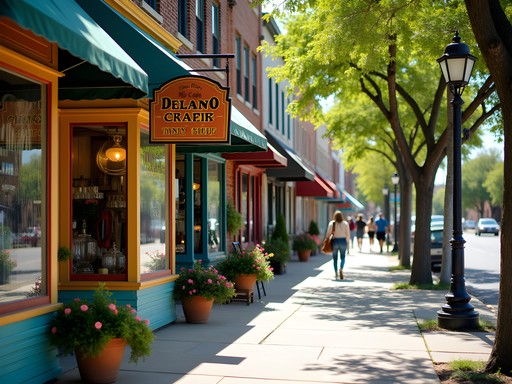
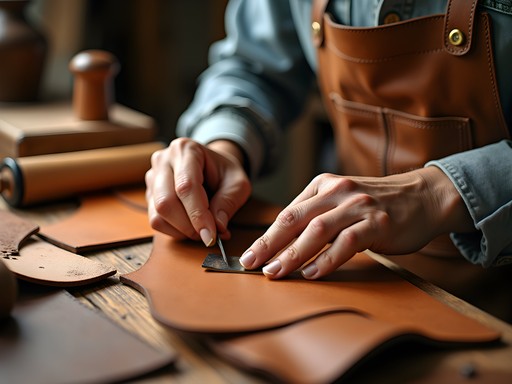
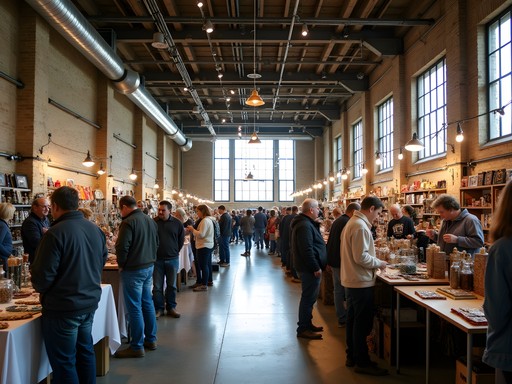





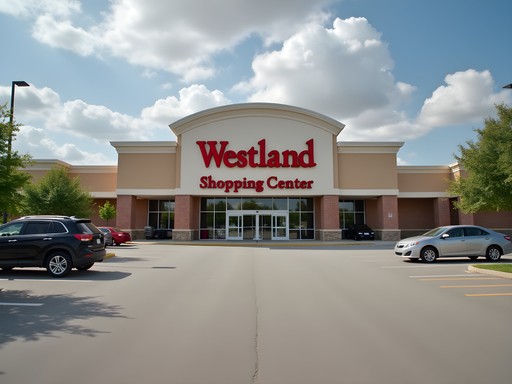


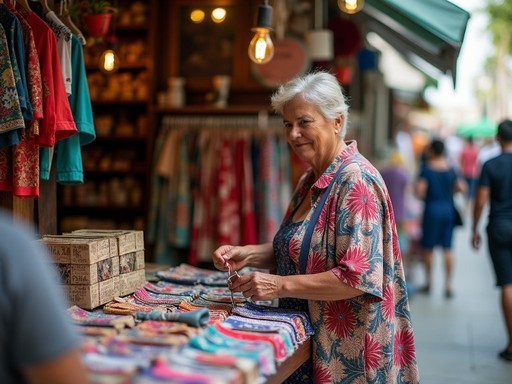
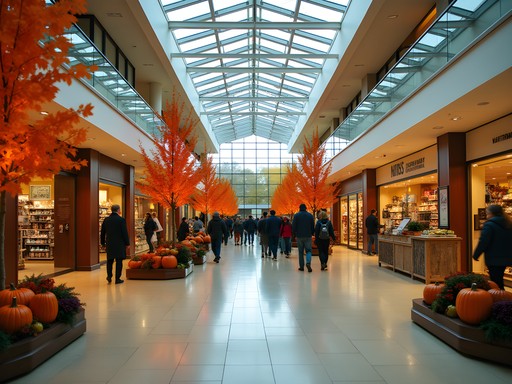

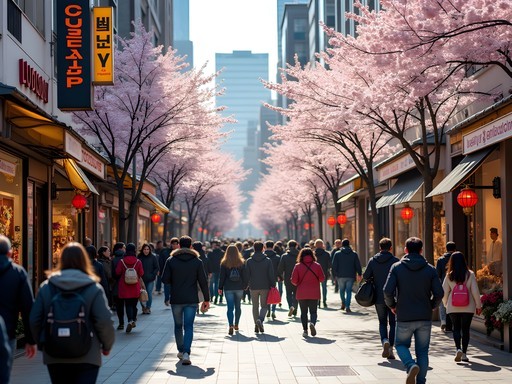
Comments
wanderguide9878
Really interested in the Native American crafts you mentioned. Are these available year-round or only during specific events? Planning a trip in November.
Leah Dixon
The Mid-America All-Indian Museum gift shop has beautiful pieces year-round! For more selection, check if your November visit coincides with the Native American Heritage Month events - they often have special markets with artisans selling directly.
wanderguide9878
Perfect! Just what I needed to know. I'll be sure to visit the museum. I've been collecting turquoise jewelry for years and would love to add something authentic from Kansas.
Savannah Torres
If you're into turquoise jewelry, I'd recommend bringing a jewelry travel case - I learned the hard way after my necklace tangled with everything else in my bag on the way home from a similar shopping trip!
Savannah Torres
Leah, this brought back so many memories! We visited Wichita last year during our cross-country family road trip, and The Workroom was such a highlight. My kids still use the handmade journals they bought there! I wish we'd known about the Indigenous craft markets you mentioned - that sounds like such an authentic experience. Did you find parking easy in the Harvester Arts District? We struggled a bit with our minivan. Also, I'd add Reuben's Mexican Restaurant in Delano for anyone shopping there - perfect lunch break spot when the shopping bags get heavy!
Leah Dixon
Thanks for reading, Savannah! Parking in Harvester can be tricky on weekends, but there's actually a public lot behind Factor 110 that many visitors miss. And yes to Reuben's - their chile rellenos are amazing after a shopping marathon!
winterrider
Love this guide! Did you find any kid-friendly shops in the Delano District? Taking my 10-year-old next month and wondering if she'd enjoy the vintage scene.
Savannah Torres
Not the author, but I took my kids (8 and 12) to Delano last summer! They absolutely loved Bungalow 26 - they have these vintage toys section that kept mine entertained while I browsed. Also check out Hatman Jack's - my son was obsessed with trying on all the different hats!
winterrider
Thanks so much! Will definitely check those out. My daughter loves quirky accessories so the hat shop sounds perfect!
sunsetseeker
Just got back from Wichita and followed your guide exactly!!! The Historic Delano District was INCREDIBLE!!! Found the cutest vintage dress at Bungalow 26 and the owner even told me about its history! You were so right about the Maker Movement - everyone was super friendly and passionate about their crafts. Thank you for putting Wichita on my radar! 💕✨🛍️
vintage_hunter
Just got back from Wichita and used this guide extensively - thank you! The Delano District was everything you described and more. Found an amazing 1970s turntable at Generations Antiques that the owner helped me test before buying. Also want to add that Clifton Square had some cute shops not mentioned here - especially if you're into vintage clothing. There's a little place called Retro Vibe that had the best selection of 80s and 90s pieces I've seen in years. Prices were reasonable too, unlike some big city vintage shops!
Leah Dixon
So happy the guide was helpful! And thank you for mentioning Retro Vibe - I completely missed that one and will have to check it out next time I'm in town. That turntable find sounds amazing!
wanderlust_jane
Going to Wichita in December! Is winter a good time to visit these shops? Any holiday markets worth checking out?
rednomad
Not the author but The Workroom hosts an AMAZING holiday market called Handmade Holiday! Tons of local makers, mulled cider, the works. Definitely check their Instagram for dates!
wanderlust_jane
Thanks for the tip! Will definitely look it up!
midwestmama42
Love the Delano District! Such a hidden gem in Kansas!
Taylor Moreau
Excellent coverage of Wichita's retail landscape, Leah. I'm particularly intrigued by the Indigenous crafts section you mentioned. I'll be visiting Wichita next month for a business conference and would appreciate more specific information about where to find authentic Native American artworks. Are there any particular galleries or shops in the Harvester Arts District you'd recommend for someone with limited time? I've found that Wichita Cultural Guide provides good background, but your firsthand experience would be invaluable.
Leah Dixon
Thank you, Taylor! For authentic Native American artworks, I'd highly recommend Prairie Sage Gallery in the Harvester District. They have a curated collection with pieces from local Wichita and Plains tribes artists. If you only have time for one stop, that would be my suggestion. The gallery owner, Mark, is incredibly knowledgeable and can tell you the story behind each piece.
Taylor Moreau
Much appreciated, Leah. I've made a note of Prairie Sage Gallery and will certainly seek out Mark when I visit. Professional connections like these make all the difference when traveling on a tight schedule.
rednomad
OMG I was in Wichita last month and totally stumbled on The Workroom by accident! That place is AMAZING! Spent wayyy too much on handmade jewelry but zero regrets. The owner was super nice and showed me some pieces made by local artists. Did you check out Bungalow 26 in Delano? They had these incredible vintage Kansas postcards I'm now obsessed with collecting. Wish I'd had your guide before my trip!
Leah Dixon
So glad you discovered The Workroom! And yes, Bungalow 26 is a gem - those vintage postcards are fantastic pieces of Kansas history. I actually have a small collection started too!
rednomad
No way! Postcard twins! 🙌 Did you get any from the 1950s? Those are my faves with the super saturated colors.
sunnydiver
I grew up near Wichita and it's amazing to see how much the arts and crafts scene has evolved! The Workroom wasn't around when I lived there, but visited last Christmas and was blown away. Picked up some amazing handmade ornaments that everyone complimented. The city has really embraced its creative side!
Venture X
Premium card with 2X miles, $300 travel credit, Priority Pass